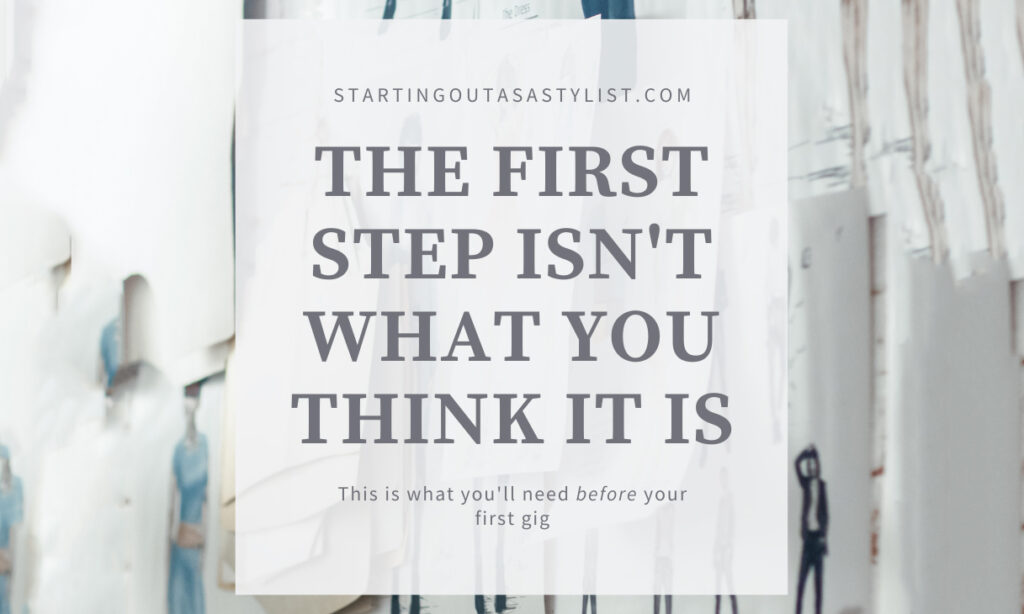Forget the Louis Vuitton, your kit is the most important bag you carry on set, and what you have in it will turn heads faster than any designer handbag will.
Building your kit is the FIRST step of becoming a stylist. Before even getting that first gig, you HAVE to be prepared for anything that can and will happen on set. YOU are responsible for having exactly what you need as there is often no other supplies available except for what you bring.
You’ll quickly find that your kit is everything, including a representation of how professional you are as an artist. Models and talent look to the stylist for things they need for wardrobe or to be comfortable and the stylist is expected to have each and every item. Clients expect you to ensure that the wardrobe is communicated flawlessly, photographers want to know you can minimize any post editing that can be avoided and established stylists who you assist will depend on you to have exactly what is needed when it’s needed during a high pressure shoot; not having a stocked kit will get you more than a few side glances and jeopardize your professional image.
Right now, it is the “Age of the Stylist” as I like to call it. Everyone is referring to themselves as a fashion stylist which makes it imperative to set yourself a part as a professional who wants to advance their career. Posting pictures and hashtagging #fashionstylist does not make someone a stylist, booking paid gigs does, and in order to book paid gigs you have to maintain a professional image.
If you haven’t had the opportunity to work on set before, it’s difficult to know where to start. In the beginning, you’ll be assisting other more established stylists and working on a lot of spec shoots (more about that later) but before even landing these gigs, commit to building this simple kit that is small but will have a huge impact of how prepared you are and enable you to perform professionally.
As your experience grows, so will your kit, however don’t under estimate the power of being prepared from day one. People remember the person they can go to for the things they need, and the sense of relief that you offer when you have something they need is invaluable in building relationships on set.
These are the absolute basics to get started
- scissors and snips
- lint roller
- safety pins, lots of them in multiple finishes such as nickel, gold and black
- clamps such as binder clips or woodworking clamps
- top tape / double sided tape / body tape
- masking tape
- static spray
- straight pins
- sharpie pens in black / red / blue
- sticker labels
- basic sewing supplies such as needles in various sizes and a small selection of thread at least in the major colours / black / navy / white / beige / red
- rubber bands, lots of them
- hole punch
- bristle cards
- measuring tape
- ziplock bags in a variety of sizes
- crazy glue or gorilla glue
- nipple guards
- insoles for men and women
- eye glass cleaner, either in a spray or wipes
- alcohol wipes
- hangers
- olfa or exacto knife
- a makeup scarf
- garment bags
- a travel steamer
This is just a start, depending on the type of styling focused on, the needs and supplies of the kit will vary, but generally there is a universal master kit that most stylists end up with encompassing all types of jobs they may encounter, used across every body of work, whether it be editorial, lookbook, talent in film and commercials, video, performers and artists or commercial and advertising photography shoots. Your kit will grow and eventually will become kit 2.0 but for now, focus on these basics. Showing up with a couple things thrown into a bag or even worse, empty handed (gasp!) will not only be embarrassing but will ensure that you probably won’t get a call back.
Throwing the mountain of supplies you will be bringing to each and every one of your gigs into one bag without organizing it isn’t an option when faced with the need to conjure a lint roller up in a snap. Come shoot time, it’s go go go and nobody will have the time (or patience) to wait while you rummage through your bag of tricks. There’s different ways of doing it, but knowing where things are and keeping supplies organized will become crucial to your stress levels. Some stylists choose to put different categories into bags and label them, I prefer a combination of a carry on bag with multiple translucent compartments that I can see through and additional bags that are labelled to organize all of my go to supplies. I keep all of my secondary supplies organized in a separate carry on and everything that I use repeatedly I put in a fanny pack and wear on set so that I don’t have to waste time going back and forth to my kit.
So now, where are you going to put all that stuff? How are you going to transport it? How are you going to transport the garments and hang them up? These are some pretty good questions and being capable of solving problems before you even have a problem is one of the main qualities of being a stylist. Besides what’s in your kit, you’ll need to figure out your own flow of doing things, and the stronger your flow the more the flow $$$
